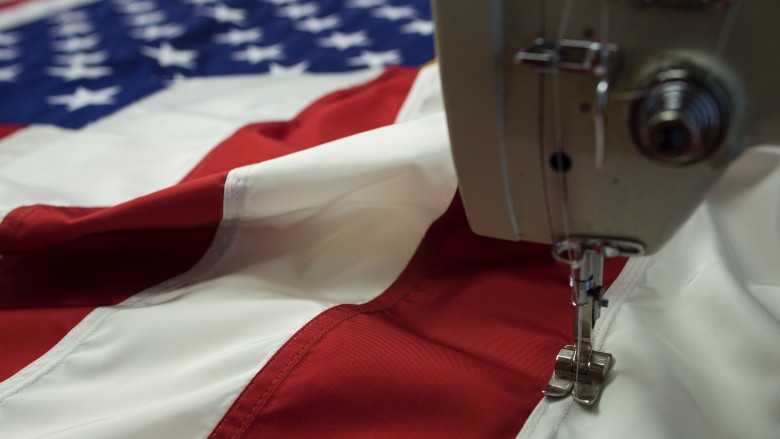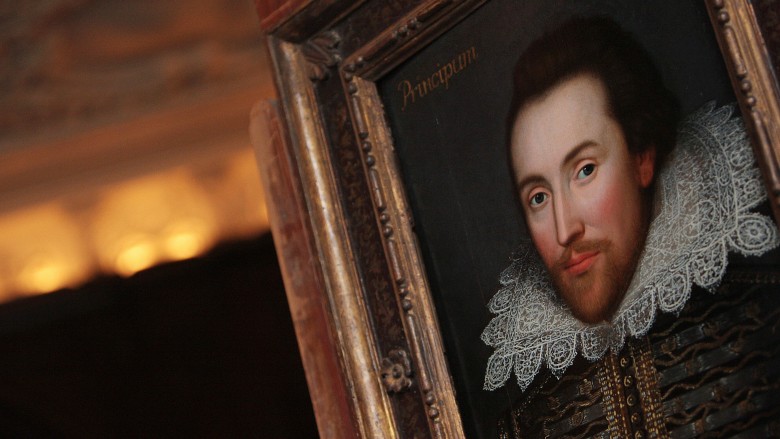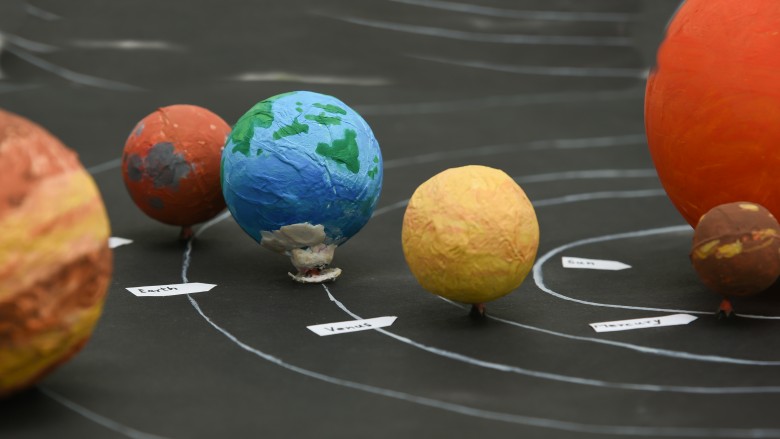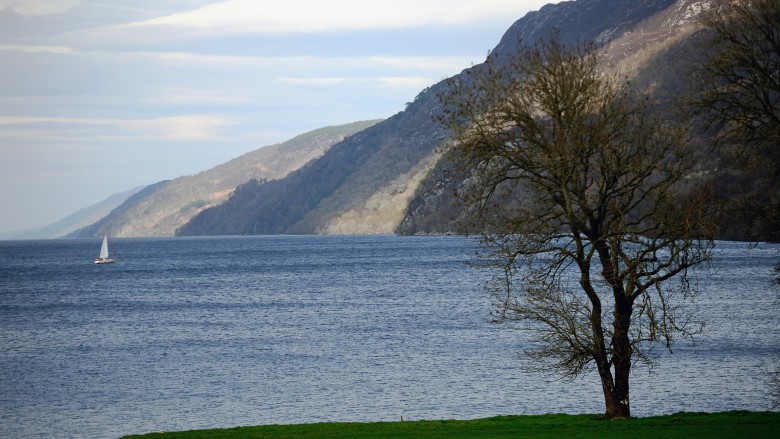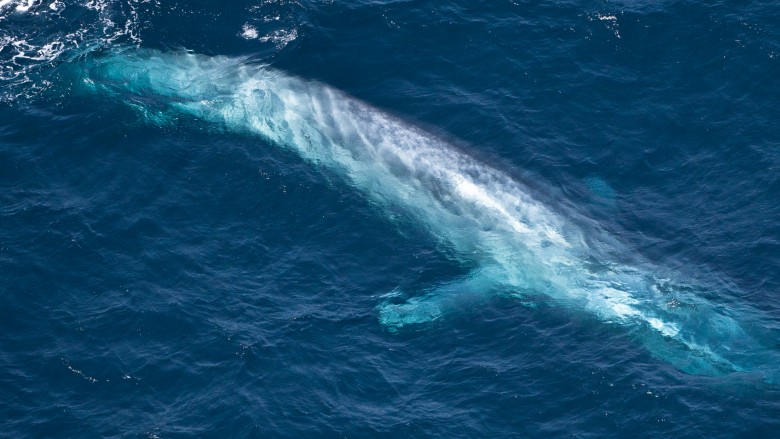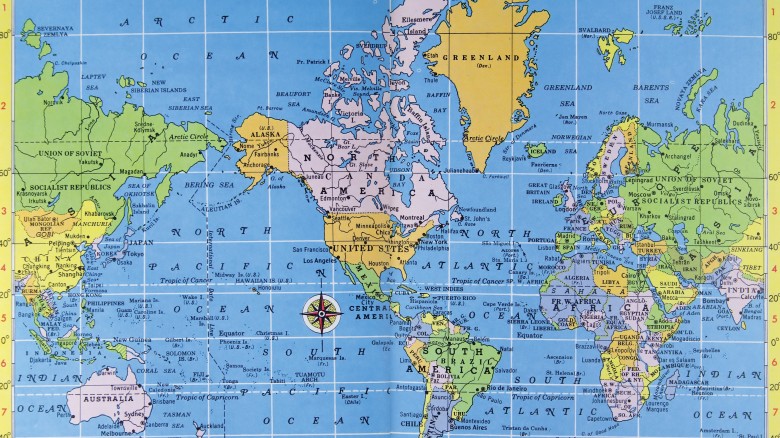Totally True Facts That Sound Totally Made-Up
The truth isn't always stranger than fiction, despite the old cliché, but sometimes the truth is so odd, it makes even the most imaginative fabrications feel dull and uninspired. The real world is brimming, in fact, with silly, outlandish, and fake-sounding facts that are 100% true. Stretch your neck — it's double-take time.
The current American flag design was created by a 17-year-old kid as a class project
No country on Earth is as in thrall to its own flag as the United States. We even give the flag its own special little holiday, Flag Day, a day when millions of patriotic Americans pause and go, "Wait — it's Flag Day? Okay, cool," because they noticed Google changed its "L" into a flagpole.
Considering the unprecedented level of slavish adoration we have for the symbol, you'd think the design of its 50-star incarnation in 1959 would have been supervised by the elites of the graphic design industry, like Milton Glaser — the "I Heart NY" guy — or the wizard who hid the bear in the Toblerone logo. The truth, however, is crazier, but also quintessentially American: a 17-year-old kid from Lancaster, Ohio, named Robert G. Heft, used his mother's sewing machine to create the 50-star flag design we know, love, and make yoga pants out of today.
Heft had a feeling Alaska and Hawaii would one day achieve statehood, so the crafty young prognosticator set to work in 1958, a year prior to their entry, designing the flag for a class project. His teacher, firmly on the wrong side of history, gave Heft a measly "B-" for the work. In lesser countries, that would have later seen Teach shipped off to a forced-labor camp. But this is America, so Heft's underdog design later triumphed over 1,500 other submissions to Congress, earning him a personal phone call in 1959 from President Eisenhower, who thanked him for his work.
The teacher, in a shameless bit of boot-licking, then increased Heft's grade to an "A," destroying his credibility as a fair and balanced educator, presumably, for decades to come.
Shakespeare invented the name Jessica
Everyone knows a Jessica. America, in particular, is absolutely lousy with Jessicas — it was the most popular female baby name in the U.S. in both the '80s and '90s. If you've forgotten a Millennial lady's name, just go with Jessica. The odds are in your favor.
Such an insanely popular name must be biblical, right? After all, the top male baby name for those decades is Michael, the guy in the Bible who was literally the leader of Heaven's army in the battle against Satan. That's biblical AF. But the Bible can't claim Jessica — it sounds like total etymological baloney, but William Shakespeare actually invented the name Jessica for his play, The Merchant of Venice, in 1569. Shylock's daughter is history's first Jessica, meaning the Bard is at least tangentially responsible for christening Jessica Rabbit, Jessica Jones, and Baby Jessica, that kid who famously fell down a well in 1987. What a genius.
All of the planets in the solar system could fit between the Earth and the Moon
It's the kind of mind-blowing, but totally made-up-sounding fact Neil deGrasse Tyson probably used in college to get girls to go home with him: you can, indeed, fit all of the planets in our Solar System between Earth and the Moon. Feel insignificant and vulnerable yet?
And it's absolutely true. Now, technically, it's only possible if the Moon is at apogee, meaning it's the farthest away from Earth it ever gets, or if all of the planets are crammed into that distance pole-to-pole, like you're trying to pack the entire Milky Way into a cosmic carry-on bag. But it's an impressive fact nonetheless, and one that sounds so impossible, you might lose some particularly stubborn and fact-averse friends over defending it. Try it tonight!
Loch Ness has more water than all of the river and lakes in England and Wales combined
Loch Ness, a lake in northern Scotland, is best known for allegedly being a haven for a cryptozoological monster. That's a shame, because there are some totally true facts about the lake that are pretty impressive too. The water temperature is so stable it never freezes, for example, which is surprising considering it shares its latitude with Alaska. If Nessie's in there, she's comfy.
But the totally true tidbit about Loch Ness that sounds like a load of old haggis is this: there is more water in the lake than all of the lakes, streams, ponds, and puddles in England and Wales combined. Not a bad place for an introverted sea creature to hide, actually.
American Airlines saved $40,000 by removing one olive from each first-class dinner salad
In the 1980s, American Airlines CEO Robert Crandall was looking for a way to cut costs that also wouldn't perturb passengers. Could he make them sit on each other's laps? How about switching out the peanuts for a thin gruel, served up in a Capri Sun-style pouch?
What Crandall actually came up with has since become the stuff of legend, and it sounds totally made-up: he decided to shrink each dinner salad the airline served by one solitary olive, reckoning that passengers wouldn't know the difference, and the savings would be tremendous. The plan actually worked, saving the company a cool $40k a year, enough cash to buy 800 Night Glow Toilet Seats from SkyMall.
Presumably, most passengers didn't complain for one of two reasons: they didn't eat the damn salad anyway, or they were cool with fewer olives because olives are totally nasty.
There's a species of shrimp that's louder than a blue whale
The blue whale is one of the loudest animals on Earth, with jet-engine-like calls that hit 188 decibels (dB). But animals don't have to be the size of a 747 to pump out raw decibel levels in that range, or even higher. There are teeny-tiny sea creatures capable of higher raw decibels, which sounds crazy, but that's because they do it at a frequency humans can't detect. (If these little dudes had trading cards with stats on the back, there'd be an asterisk next to "Max dB.")
A tiny creature known as a pistol shrimp has a "scream" that actually beats a blue whale's call, in terms of raw decibel level. They have a claw they can snap shut so fast, it creates a bubble that immediately bursts with such intensity, it puts out a Hadouken-like shockwave measured at 200 dB. The shrimp version of M. Bison doesn't stand a chance.
As impressive as that sounds, there's an insect known as the water boatman which is actually louder, relative to its size. A male water boatman can generate 99 dB by rubbing its penis across its abdomen, a trick we don't recommend you try at home.
Maine is closer to Africa than Florida
Maps of our planet are notoriously misleading, especially the Mercator projection, which makes Greenland look the size of Africa. That's insanely deceptive, and has arguably led to generations of kids believing Africa isn't as massive as it really is. It's the second-largest continent, but the Mercator projection gets wildly distorted the further things get from the equator, so it looks puny. In reality, you could fit three Canadas inside of it. That's a lot of maple syrup.
Misleading map projections are probably why people find it hard to believe that Maine is, in fact, the closest state to Africa. Heading out from a little peninsula called Quoddy Head, you're only 3,154 miles from the closest point in Africa: El Beddouza, Morocco. Compare that to the easternmost point in Florida, the more obvious guess, which is 4,085 miles away from the closest point. That's an almost-1,000 mile difference, undetected by most, all because a by-Europeans, for-Europeans map projection is still so widely used. Geography nerds should be up-in-arms. #NotMyProjection
About 1 in 5,000 babies are born without an anus
It sounds too horrific to be true, or like an awful joke in a sketch parodying telethons, but it's 100% true: 1 in 5,000 babies are born without a proper anus, and it happens to boys slightly more often.
In the best cases, the so-called anorectal malformation means the anus is just narrow or misplaced, requiring corrective surgery. But in the worst cases, the baby is born with a membrane covering what should be the anus, like they're a Ken doll. In these cases, surgery is required to literally create a booty hole, which isn't something anyone learns about on day one of medical school. This means there's gotta be some surgeon out there particularly gifted at making anuses, which is probably the only medical subplot Grey's Anatomy has yet to explore.
A grape has more genes than the human body
Wine that costs more than your mortgage is pretty ridiculous, but connoisseurs aren't totally full of it when they talk about the complexity of a glass of pinot noir. The pinot noir grape, believe it or not, has 30,000 genes in its DNA, which trumps the human genome, which only has 20,000-25,000.
More than 100 of the grape's genes are dedicated to creating tannins and terpenes, which don't sound appetizing, but they're what give wine its much-ballyhooed flavor and depth. That's right: we're less complicated, genetically, than the fruit we stomp to get drunk. And what are we doing with this knowledge? Welcoming our wine overlords, of course, by using the discovery to create new, tastier flavors of wine, grown on vines more resistant to pests and diseases, thus enabling us to more-easily get blitzed on better, more-readily-available vino.
Australia once declared war on emus
It's a one-two-punch of fake-sounding facts, both totally true: in 1932, Australia declared war on a flock of 20,000 crop-devastating emus. Despite deploying a brigade of machine gun-wielding ex-World War I soldiers, the emus ultimately proved victorious. This is why Emu is the official language of Australia, and Emu art and architecture prevail on the continent, which was subsequently renamed Emustralia.
Seriously, though: the emus managed to evade the machine-gunners for an entire month, splitting the flock into small groups too scattered for the men to track and kill. It soon became economically inviable to keep the battle going, so Australia just gave up. The flightless birds are still thriving in the area to this day, probably sharing stories about how their great-grandemus totally dunked on the Aussies for one glorious month. And unlike the stories humans tell about our ancestors, it's 100% true, despite sounding like an ill-conceived arcade crossover between Contra and Joust.

